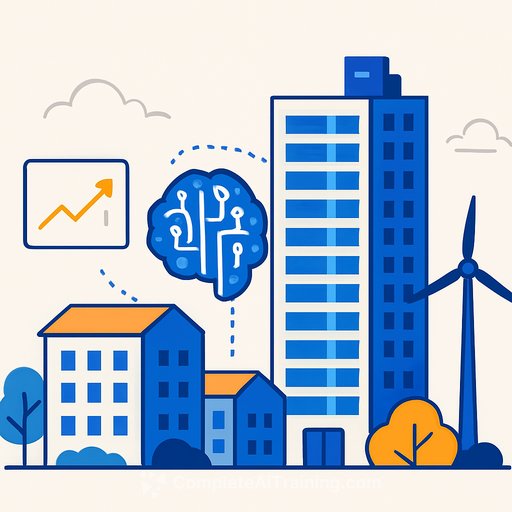AI is picking the wrong Melbourne properties - here's how pros should use it
Generic AI can write a tidy email. It shouldn't pick your next investment.
Recent testing in Melbourne shows mainstream AI tools ignored clear instructions, overweighted rental yields, and pushed buyers toward high-supply unit markets. The risk: hundreds of thousands of dollars lost to flat growth, hidden costs, and poor asset selection.
What the testing found
- With a simple brief (4%+ yields, $1m budget, 5-year growth), AI recommended only units - Box Hill, Footscray, Clayton - at $455k-$650k. It ignored the $1m budget and missed that these pockets have heavy new supply coming, a headwind for capital growth.
- With a longer, professional prompt and supplied data, it still skewed to units and repeated the same suburbs (plus Sunshine, Maribyrnong), adding just one house option in Melton South. It ignored key figures provided by the tester.
- Observed bias: it overvalued "rental yield" keywords and likely leaned on marketing-heavy content promoting high-rise projects.
The kicker: results got worse as more data was added. The model misrepresented the very data it was fed.
Why this matters (units vs. houses, and the supply trap)
Case studies backed up the concern. A two-bedroom Clayton apartment sold for slightly less than in 2017. Footscray units were mostly flat over five years. Meanwhile, a two-bedroom villa unit in Clayton outperformed by ~$143k from 2016 to 2025.
On paper, big projects look like a tailwind - Suburban Rail Loop East, Metro Tunnel, West Gate Tunnel, new hospitals. But if the asset is in a high-rise corridor with heavy future stock, those macro wins often don't translate into price growth for generic apartments.
Suburban Rail Loop East and the Metro Tunnel will improve access, but they won't save the wrong product type in an oversupplied pocket.
What seasoned operators are saying
- Quantity surveyors and buyer's agents are seeing AI-pitched suburbs that don't stack up when you check micro-locational and supply factors.
- Footscray units can work - if you filter for larger floor plans, quiet streets, and smaller complexes (ideally sub-20). That nuance was missing from the AI outputs.
- Investors using AI daily still avoid letting it select suburbs. It predicts using historical text, not independent reasoning.
- Specialist, property-focused AI is emerging - and can help with tasks like cross-referencing building reports against defect databases - but even those tools should avoid telling buyers where to invest.
Use AI for this - not for picking the suburb
- Policy scanning: track changes in tenancy rules, land tax, zoning proposals, infrastructure timelines.
- Document triage: summarise 60-70 page building and pest reports, compare against known defect patterns, flag costed remediation items.
- Data housekeeping: clean rent rolls, categorise maintenance logs, draft comms with owners/tenants, prep valuation evidence packs.
- Scenario prep: outline questions for agents, planners, or builders; build checklists for site inspections.
A quick sanity check for any AI-suggested area or asset
- Budget discipline: did it adhere to your price range and asset brief (house vs unit, bedrooms, land size)? If not, discard.
- Supply pipeline: confirm building approvals, tower cranes, and off-the-plan launches within 1-2km. High supply = growth drag.
- Product filters for units: target larger sizes, quality streets, low-rise blocks with fewer than 20 dwellings, low body corp fees, strong owner-occupier ratio.
- Yield reality check: subtract vacancy, management, body corp, maintenance, and capex to a 10-year average. Stress test at higher interest rates.
- Comparable sales: if 5-year resales are flat or negative for similar stock, don't assume infrastructure will fix it.
- Land component: prefer land-rich assets where possible. For units, prioritise sites where land value per unit is meaningful.
- Human-in-the-loop: get an experienced valuer, QS, or buyer's agent to review the shortlist before you move.
The test prompts and the miss
Basic prompt goal: "List three Melbourne suburbs with 4%+ yields to invest $1m with the best 5-year growth."
- AI picks: 1-2 bed units in Box Hill, Footscray, Clayton at $455k-$650k.
- Issue: ignored the $1m budget, fixated on unit yields, and missed the future supply risk.
Advanced prompt goal: Detailed, professional brief with data included.
- AI picks: units in Sunshine and Footscray/Maribyrnong; one house option in Melton South/Cobblebank.
- Issue: still ignored parts of the data, kept a unit bias, and didn't account for upcoming stock.
Practical workflow for teams
- Write your buy-box like a spec: price, dwelling type, minimum land or internal size, body corp ceiling, streets to avoid, and non-negotiables.
- Use AI to prep questions and checklists, not to pick suburbs. Make it do the grunt work; you do the judgment.
- Run a supply audit: planning portals, cranes, approvals, and developer PR. If you see volume, treat yield with suspicion.
- Cross-check with a control suburb or product type you know well to see if the logic holds.
- Never act on the first AI answer. Ask it to show its sources and run a second pass with your own comps.
Bottom line
AI can save time, spot admin errors, and surface blind spots. But let it choose your investment suburb or asset, and you're outsourcing judgment to a tool that can't see street-level nuance or future stock risk.
Keep AI on research, summarisation, and compliance. Keep selection and pricing with experienced humans.
If your team wants structured upskilling on safe, practical AI use for property workflows, see the courses at Complete AI Training.
Your membership also unlocks:






